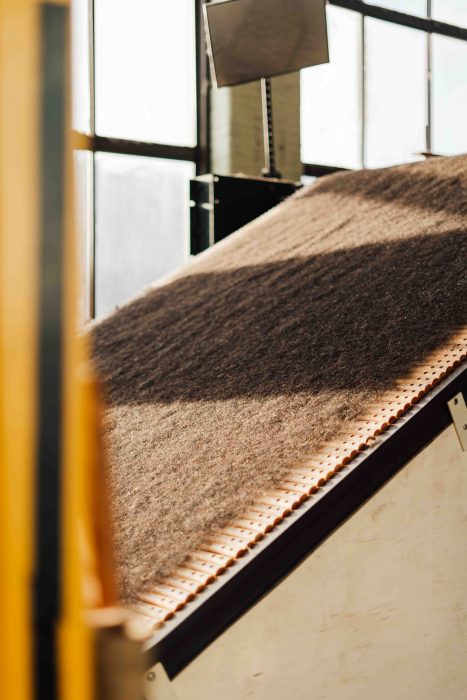What Is Needle Punch Felt Manufacturing?
Needle punch felt manufacturing is a traditional mechanical bonding process that uses barbed needles to mat fibers together. Needle punch offers a broad application base that can be achieved with one line. At BIT, we custom manufacture our industrial non-woven felt for technical applications using the needling method.
Where Is Needle Punch Felt Used?
Needle punch felt products can be found in both common and uncommon places. From in your home, like HVAC filters and carpet underlayment, to your car’s wheel wells and headliner, to more obscure applications like cured-in-place pipe replacement, needle punch felt can be found almost everywhere you look.
Because non-woven fabrics are available with a variety of characteristics, needle punch nonwoven felt provide textiles for a multitude of industries:
- Apparel
- Automotive
- Filtration
- Bedding
- Geotextiles
- Packaging
- PPE
- Thermal Insulation
- Acoustical Insulation
Why Use Needle Punch Felt Technology?
Needle punch felt construction can be enhanced to highlight characteristics like flame resistance, high abrasion, memory retention, flexibility, filtration, etc. They can be made available in a wide range of materials and designs.
The needle size, quantity, and placement affect the functional characteristics of the finished felt. The number of times the needle loom punctures the fabric and their distance can be adjusted to enhance the fabric’s density (the higher the density, the more durable).
Overall, calibrating the appropriate needle sizing, quantities, puncture frequencies, and distributions will form the material according to type and thickness.
The needled felt can go on to receive different finishing treatments, including:
- Additional needling for more density
- Heat treatment
- Calendaring
- Singeing
- Lamination
- Die-cutting
You can choose from standard SAE grade felts or custom create a felt for your unique project’s needs.

How Is Needle Punch Felt Made?


1. Raw Fiber Selection
The process begins with determining the intended end-use of the non-woven material. This will influence the fiber selection depending on the different characteristics and traits necessary for the material’s function.
The selected fibers are broken up and separated in compact bales.
2. Carding Machine
Because most felts are a combination of different fiber types, the varying materials are weighed and blended using a carding machine. The carding machine breaks up the clumps of fibers to create individual fibers aligned parallel to one another, forming a web.
3. Cross-Lapper
The web leaves the carding machine to a cross-lapper that folds the layers of webbing over itself to achieve the desired weight and thickness of the finished felt.
4. Needle Loom
The webbing, or batts, ender the needle loom where barbed needles vertically pierce the materials at a rate of 600-2000 punches per minute. These needles repeatedly puncture the webbing until a mattified material is produced.
What Makes BIT Needle Punch Different?
Most needle punch manufacturers go from about 0.5 ounces per square yard to 30 ounces per square yard. Our machines start at 6 ounces per square yard and go up to 500 ounces per square yard.
Our ability to customize and tune our machinery to different specs will allow your product to be produced for the exact application you need.

